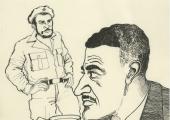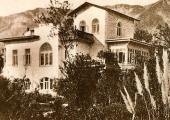Art Gallery: Sarnath Banerjee



When roused, Lisbeth Salander (Noomi Rapace), the sullen, leather-clad, metal-pierced heroine ofThe Girl With the Dragon Tattoo, is as ferocious as the panther her physical presence evokes. Forced to perform oral sex on her legal guardian, then raped by him, she returns to his apartment, fells him with a stun gun, binds him naked, makes him scream with a dildo, plays him an incriminating “candid camera” video of his attack on her, and tattoos “I am a sadist pig and a rapist” on his chest. Well, you may conclude, he had it coming.

The final days of Tolstoy are innately dramatic, as the American author Jay Parini intuited. The Last Station, published in 1990, was his novel about the novelist’s own denouement. Towards the end of his long and prodigiously successful life, Tolstoy chose to embrace the simple values of the fabled Russian peasant he had lionised in War and Peace. To that end, he determined to leave his entire fortune and publishing rights to the political organisation set up to disseminate his credo. For his wife, it was naturally all rather upsetting.

The Russians have always been good at writers' houses. The Soviets especially. When I first saw Tolstoy's house his blue smock was hanging behind the door, a manuscript was on his desk but the chair pushed back as if he'd nipped out for a moment and would be back. It was a frankly theatrical effect and the better for it. Like Tolstoy’s, Chekhov's two houses - one in Melikhovo near Moscow and the other in Yalta in the south - were well funded and maintained and imaginatively presented in those days. Only the last is true now.
There’ll always be Austen on the telly. As the Bard is to the boards, so is Saint Jane to the box. The six novels were published (though not all written) in a seven-year period in the 1810s. In a rather shorter tranche of the 1990s they were all adapted for the (mostly small) screen. They’ve now just been done again, on the whole rather less well than the first time round.
Adrian Lyne met controversy in the cinema with it head on, while Vladimir Nabokov's novel prompted one of the resounding Broadway flops of Edward Albee's stage career. (Trust me: I am among the few who caught its 1981 New York run.) So here is Lolita once more, this time filleted and distilled into a one-person show suspended somewhere between a stage reading and an actual play. Call it what you will, the result is mesmerising.